10 Car Pollution Statistics to Know in 2025
-

- Last updated:
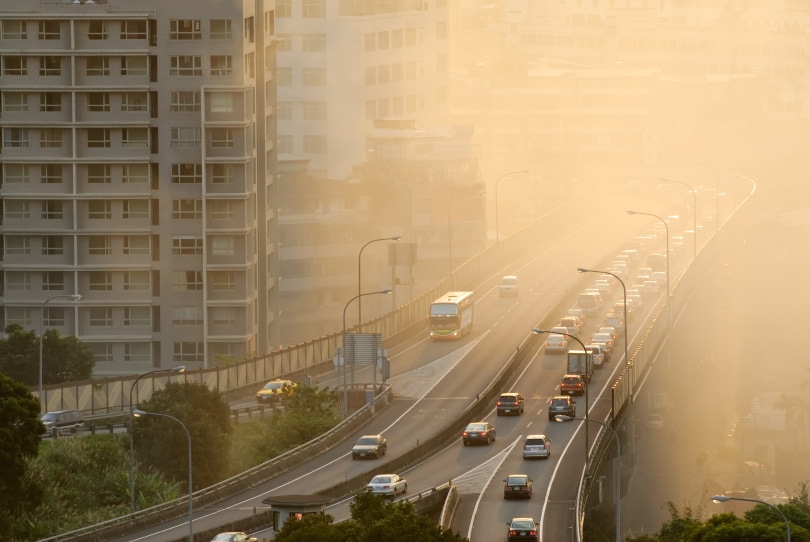
Note: This article’s statistics come from third-party sources and do not represent the opinions of this website.
You sit in your car for hours every day going to or from work or school, but have you ever considered the pollution that cars emit? Many don’t think about it until they see heavy smog, which can affect more than just your lungs. Some of the worst effects of car pollution have to do with how it affects the earth.
Cars are convenient for everyday life, but they also adversely affect the environment. This includes carbon emissions, which eventually cause more harm than good.
Click below to jump ahead:
- Amount of Emissions from Cars
- Regions with Most Car Pollution
- Worst Polluters and Fatalities of Car Pollution Worldwide
The 10 Car Pollution Statistics
- An average passenger vehicle emits around 4.6 metric tons of CO2 (carbon dioxide) every year.
- In China alone, the carbon monoxide emitted by cars was over 7 million tons in 2020.
- 41% of global transportation emissions are from cars.
- One gallon of gasoline in a car produces 19 pounds of carbon dioxide when combusted.
- Cars and trucks account for about 1/5 of all emissions in the US.
- Pakistan has the worst air pollution in the world. Cars here produce 25% of the country’s carbon emissions.
- One-third of Canada’s air pollution is caused by cars.
- The Lamborghini Aventador SV is the worst automotive polluter. It burns a gallon of gasoline per 18 miles.
- There are more than 20,000 fatalities in America every year due to car pollution on the roads and highways.
- 90% of the air pollution in fast-growing cities worldwide comes from cars.

Amount of Emissions from Cars
1. An average passenger vehicle emits around 4.6 metric tons of CO2 (Carbon Dioxide) every year.
(EPA)
The amount of CO2 emitted by a car is measured in metric tons. It depends on the amount of fuel consumed and the cargo transported. Carbon dioxide levels have been rising at an alarming rate since the beginning of the industrial revolution.
The problem has become so severe that many countries are seeking ways to reduce their emissions. They hope to avoid catastrophic climate change impacts such as rising sea levels, floods, and droughts.
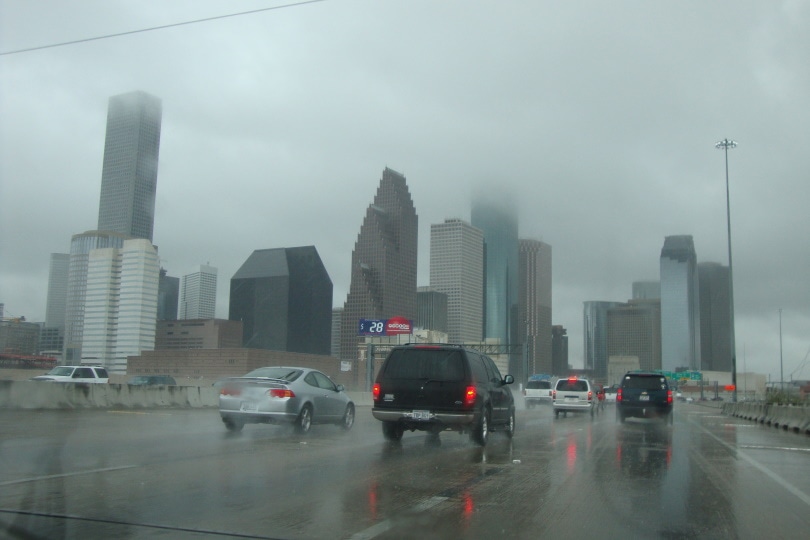
2. In China alone, the carbon monoxide emitted by cars was over 7 million tons in 2020.
(STATISTA)
Carbon monoxide is a colorless, odorless, and tasteless gas. It’s produced when fuel (such as gasoline) reacts with oxygen. China is a major motor vehicle manufacturer, and it is no surprise that the country has high CO2 emissions.
Inhaling too much carbon monoxide over a long period can damage the blood vessels in your lungs. Also, it can restrict blood flow, which can cause death. At lower levels, it can cause headaches, dizziness, and weakness.
3. 41% of global transportation emissions are from cars.
(STATISTA)
The percentage of global transportation emissions is a massive slice of the pie. The world is becoming urbanized. The transportation sector is the second largest contributor to global climate change. Most emissions from cars are produced in cities, where most people live and drive.
Due to this, many countries have been banning gasoline and diesel-fueled cars to reduce carbon emissions and pollution. They’re even incentivizing people to buy electric or hybrid vehicles.

4. One gallon of gasoline in a car produces 19 pounds of carbon dioxide when combusted.
(EIA)
A gallon of gasoline weighs about 6 pounds. When a gallon of gasoline combusts, it releases carbon dioxide. Considering that one gallon of gasoline can propel an average car for 100 miles, the amount of carbon dioxide created by the combustion is quite significant.
The amount produced depends on the type of fuel used, the region it’s used, and the distance driven per fuel tank. This emission is the leading cause of global warming worldwide.
Regions with Most Car Pollution
5. In the US, cars and trucks account for about 1/5 of all emissions.
(OUR WORLD IN DATA)
Except for electric vehicles, most of our transportation involves burning fossil fuels and releasing greenhouse gases into the atmosphere. Cars and trucks produce a high percentage of emissions in the US. After all, there are more of them on the road compared to any other type of vehicle.
However, transportation is only one part of climate change. Other emissions come from power plants, factories, and other human activities. Besides, most gasoline is derived from oil and gas drilling, which releases carbon dioxide into the atmosphere.
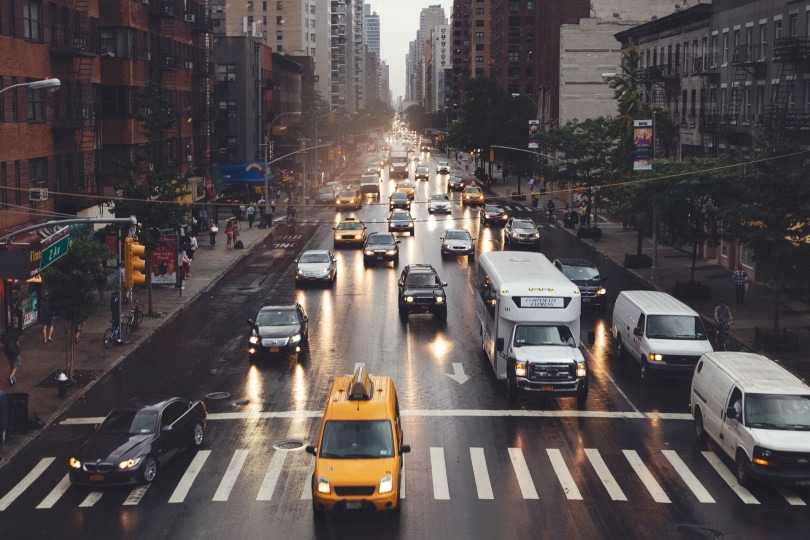
6. Pakistan has the worst air pollution in the world. Cars here produce 25% of the country’s carbon emissions.
(DW)
Out of all the countries in the world, Pakistan suffers from the worst air pollution. A quarter of the air pollution is from transportation alone. The good news is that the country is making strides to reduce harmful emissions to provide a better future for its citizens.
7. One-third of Canada’s air pollution is caused by cars.
(BRUNSWICK CANADA)
Car exhaust contains the same pollutants as coal-fired power plants. That means cars are now a bigger source of air pollution in Canada. Although transportation contributes to Canada’s air pollution, its emissions have been falling over time due to technological improvements to reduce pollution.
One way to reduce nitrogen oxide pollution is to drive less and on cleaner fuel. Governments are working with the auto industry to ensure a broad range of choices for every driver.
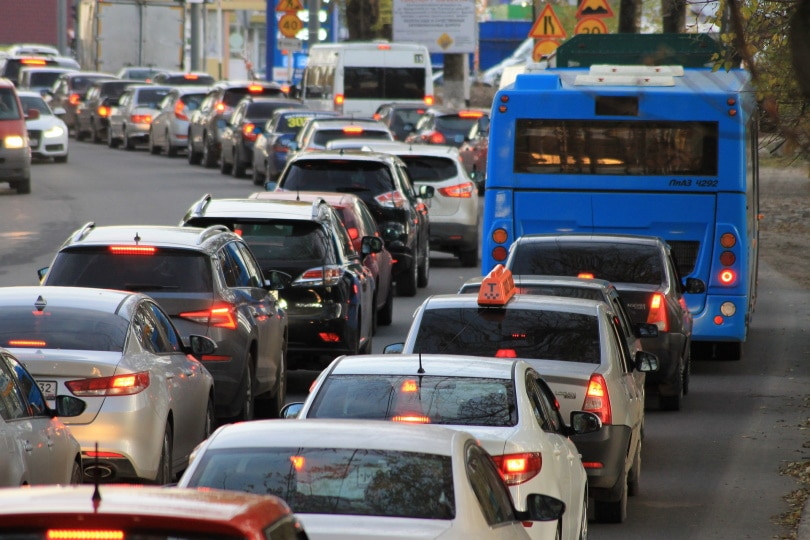
Worst Polluters and Fatalities of Car Pollution Worldwide
8. Lamborghini Aventador SV is the worst automotive polluter. It burns a gallon of gasoline per 18 miles.
(CONSUMER SEARCH)
The Lamborghini Aventador SV is undoubtedly one of the most impressive supercars ever to hit the streets. But it also happens to be one of the least fuel-efficient cars. The car was designed for speed, not fuel efficiency. It releases 595 grams of carbon dioxide per kilometer traveled.
The Italian supercar has a 6.5-liter V12 engine that produces 750 horsepower for a 0-60 mph time of 2.9 seconds. It gets an EPA ranking of 12 mpg city and 16 mpg highway, which is slightly better than the old model. However, it’s still one of the worst polluters on the road.
9. There are more than 20,000 fatalities in America every year due to car pollution on the roads and highways.
(EDF)
Toxic pollutants released by vehicle exhausts harm people’s health and lead to increased hospital visits and shortened lifespans. The United States is one of the few countries where most people drive cars and trucks daily. This high volume of vehicles on the road has made car pollution a significant issue in America.
The number of deaths caused by vehicular pollution in the US is massive, at over 20,000 fatalities yearly. Also, carbon dioxide emissions are directly linked to global warming.

10. 90% of the air pollution in fast-growing cities worldwide comes from cars.
(EPA)
In the world’s fast-expanding cities, cars are the biggest source of air pollution. As cities expand in response to growing populations, they are also expanding their infrastructure. Road building and, more recently, rail construction has led to a phenomenon known as urban sprawl. It’s the spreading of houses and businesses over a greater land area.
It has increased traffic congestion and encouraged more people to use their cars for shorter journeys. Also, this has led to rising emissions of harmful pollutants from vehicles.
Frequently Asked Questions on Car Pollution
How do cars cause air pollution?
Car engines burn gasoline or diesel fuel, creating combustion gases like carbon dioxide, carbon monoxide, sulfur dioxide, and nitrogen oxides. The level of pollutants emitted depends on the fuel used in an engine and how it was manufactured.
Pollutants are emitted in larger amounts when an engine is cold due to incomplete combustion. The emissions from a car’s tailpipe contain chemicals that react with other chemicals in the atmosphere. They produce smog and other dangerous pollutants.
When these chemicals react with sunlight, ozone is produced. Ozone is a gas that irritates the lungs and causes chest pain, coughing, and asthma attacks. Ozone can also damage plants, crops, and other materials such as rubber tires, electronic equipment, and paint.
(UCSUSA)

What car fuel pollutes the environment the most?
Burning diesel fuel in a car produces significantly more pollution than burning gasoline. While burning gasoline in a car also produces particulate matter, it’s not as bad as diesel.
Still, how one drives impacts how much pollution a car produces. When you accelerate hard and drive fast, your engine must work harder. So, it increases the number of toxic emissions in the exhaust fumes.
You may have heard about sports cars that have “smoked” their engines because their owners have driven them too hard from day one. If you don’t maintain your engine, the same thing may happen with regular cars. So, be careful!
(EIA)
What causes more pollution: cars or planes?
Cars use far more fuel than planes do per passenger mile traveled. It’s because cars carry fewer passengers than planes. Thus, traveling by plane, train, or bus will likely cause less pollution than driving your car.
First, a car can only carry up to five people. This means that if there were no buses, trains, or planes to carry people, there would have to be more cars for everyone to drive. You can only imagine the amount of pollution. Luckily, we have trains and planes that transport many people at once.
Second, planes and trains are generally more efficient ways of transporting people than cars. They use less fuel per person. It’s because they travel faster and carry more passengers. There’s also less space wasted on roads and parking spaces with public transport.
(YOU MATTER)
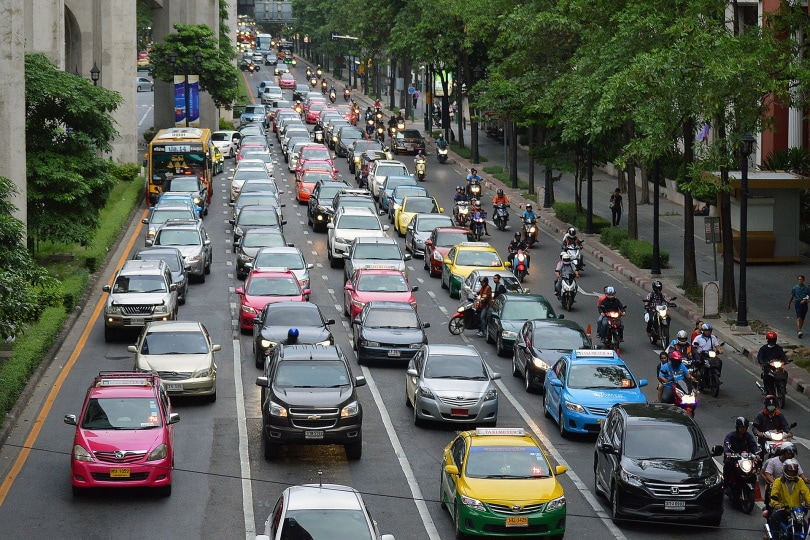
What car types have the worst emissions?
The car with the worst emissions is the Aston Martin Vanquish. It produces 330g/km of CO2. It’s a massive 123g/km more than the Ferrari 599 GTB and an astonishing 172g/km more than the Bentley Continental.
The Aston Martin V12 Vantage S is even worse. It’s at 334g/km. The Ferrari 430 at just 209g/km. A car can emit thousands of tons of carbon dioxide over its lifetime. That’s why the type of fuel used in a car can have a massive effect on the environment.
(COAST CAPTURE AIR)
How do cars affect climate change?
There are two types of greenhouse gases emitted when you fill your tank with gasoline or diesel. They’re carbon dioxide (CO2) from burning fossil fuels and nitrous oxide (N2O) from chemical reactions between the fuel and oxygen in the atmosphere.
As more cars use fossil fuels such as petroleum and natural gas for energy, more greenhouse gases are emitted into the atmosphere.
Cars are the single biggest source of air pollution in the United States and a major contributor to climate change. The federal government estimates that cars, trucks, and other light-duty vehicles account for a third of all greenhouse gas emissions in this country. That’s more than any other single source, including power plants and factories.
(FUEL ECONOMY)
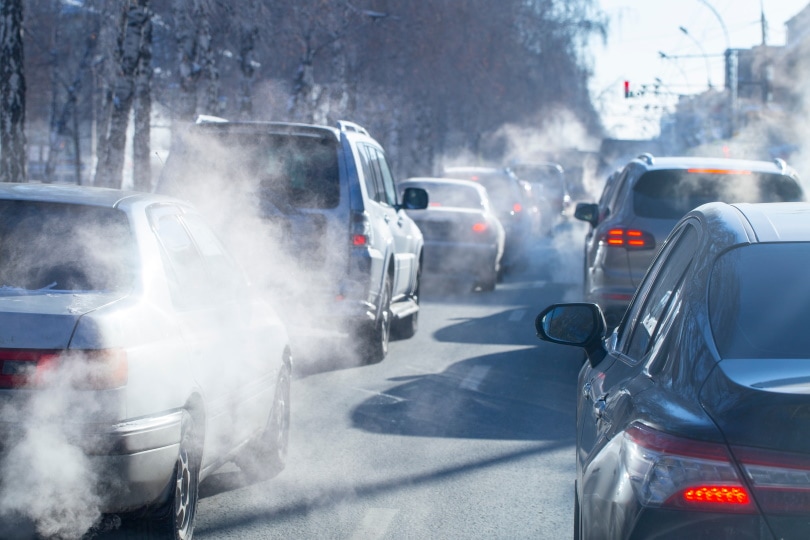
Are there laws regulating car pollution in the US?
Many laws regulate car pollution in the US, but most of them apply only to new cars as opposed to used cars. Type I emissions standards apply to all new cars sold in the US based on a car’s weight. All cars must meet these emissions standards before they go on sale. The standards test for carbon monoxide, hydrocarbons, and nitrogen oxides.
For example, cars must use less than 0.07 ounces of hydrocarbons per mile traveled. Each automaker must meet corporate average fuel economy (CAFE) requirements covering all its cars. These requirements force automakers to make lighter, more fuel-efficient cars and trucks.
(C2ES)
What are car manufacturing companies doing to reduce air pollution from cars?
Air pollution is a primary concern in all the major cities today. Car manufacturing companies are trying to find ways to reduce air pollution caused by cars. Many new cars now have technology that helps reduce emissions. For example, they’re fitted with catalytic converters, which help convert toxic gases into less harmful substances through a chemical reaction.
Catalytic converters have been around for quite some time, and car manufacturers have refined them over the years to make them more effective. Tailpipe emissions are still a critical problem, but car manufacturers are improving air quality by looking at ways to reduce fuel consumption. Some cars can be run on electric power, rather than petrol or diesel.
(ENVIROTECH ONLINE)

How to Reduce Pollution from Cars
A crucial part of reducing pollution from cars is driving less. However, there are a few ways to reduce the pollution associated with your vehicle. First, turn off your engine when you’re stuck in traffic. You can also turn off your car at red lights and stop signs. It’ll save gas. Use mass transportation where possible. If you live in a city, take subways or buses to get to work or other places around town.
Also, bicycle riding is an excellent way to get around without polluting the air. Consider buying a bicycle for commuting to work or school if it’s practical for your situation. You can also buy a fuel-efficient car. When buying one, check the fuel economy of several vehicles. Buy one that gets the best mileage per gallon, if possible.
Another excellent option is to drive an electric car rather than one that runs on gasoline or diesel fuel. They are impractical for long trips because of limited driving range and long charging times. However, they are great for commuting to work or running errands around town.
(EPA)
Conclusion
So, you may be wondering, do we need to worry about air pollution? The answer is yes! Cars are a primary contributor of pollution to both the local and global atmosphere. That is why we must change our ways and take action. It’s up to us to make a difference in our environment before it’s too late.
The effects of car pollution are everywhere. Regular exposure to common pollutants can lead to increased incidents of respiratory disorders, cancer, and even premature death.
As new car models are manufactured to be more fuel-efficient, and older car models that don’t meet maximum emission standards are phased out, car pollution will continue to drop. But there’s still a long way to go before the air we breathe becomes cleaner. Until then, keep this handy list of 10 car pollution statistics to help you understand more about your carbon footprint on the environment.
Related Reads:
Featured Image Credit: elwynn, Shutterstock
Contents

